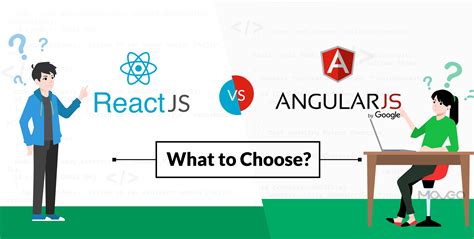Comparing Form Handling in React and Angular
 Saviour Eking
Saviour EkingTable of contents

In the ever-evolving world of frontend development, two frameworks have stood the test of time: React and Angular. Both offer different approaches to solving common problems and have thousands of loyal and supportive followers. In this article, we will explore how React and Angular handle forms.
The Problem
Form handling has always been an integral part of frontend web development. Forms are used to receive data from users for various purposes, such as signing up, logging in, and purchasing items. Angular and React approach form handling in distinct ways, and in this article, we'll explore their solutions, advantages, disadvantages, and help you decide which to use in your next project.
The Solutions
Angular: Reactive Forms
Angular provides a built-in module called Reactive Forms, which adopts a reactive programming approach. It emphasizes immutability and a clear separation of form control and validation logic.
Key Features:
- Strong Typing: Built with TypeScript, providing strong typing for form controls and validation.
- Comprehensive Validation: Offers a wide range of built-in validators and allows the creation of custom validators.
- Observable-Based: Uses observables to handle form value changes, making it easy to react to user input dynamically.
Advantages:
- Type Safety: Strong type system with TypeScript which enhances code quality and reduces runtime errors.
- Comprehensive: Built-in support for various validators and custom validator composition provides a robust validation framework.
- Separation of Concerns: Clear distinction between the form’s structure and its template improves code readability and maintainability.
- Reactive Programming: Leveraging RxJS observables, Reactive Forms allow for powerful reactive programming patterns.
Disadvantages:
- Complex API: The API can be more complex and verbose compared to simpler form libraries, requiring a steeper learning curve.
- Boilerplate Code: Reactive Forms often require more boilerplate code, which can slow down development for simpler forms
React: React Hook Form
React, being a library focused on being lightweight, does not provide a built-in solution to handle forms. This gap is filled by third-party libraries, such as React Hook Form.
React Hook Form is a library for managing form state in React using hooks. It emphasizes simplicity and performance by leveraging React’s hooks API.
Key Features:
- Minimal Re-renders: Minimizes re-renders by only updating the form elements that need to change.
- Integration with Other Libraries: Integrates seamlessly with validation libraries like Yup and third-party UI libraries.
- Simple API: Provides an easy-to-use API with less boilerplate compared to other form libraries.
Advantages:
- Performance: Reducing unnecessary re-renders ensures smooth performance, even with complex forms.
- Easy to Learn: The API is straightforward and leverages familiar React hooks, making it accessible for developers already comfortable with React.
- Less Boilerplate: Requires less code to achieve the same functionality, reducing development time.
- Flexibility: Allows for flexible form validation and error handling by integrating with various validation libraries.
Disadvantages:
- Understanding Hooks: Requires a solid understanding of React hooks, which can be a barrier for new React developers.
- Less Built-in Validation: Relies more on third-party libraries for complex validation rules.
Conclusion
Both React Hook Form and Angular Reactive Forms offer powerful solutions for form handling, each with its own set of advantages and trade-offs. React Hook Form stands out for its simplicity, performance, and flexibility, making it ideal for developers who prefer a lightweight and intuitive approach. Angular Reactive Forms, on the other hand, provides a comprehensive and type-safe framework, well-suited for large-scale applications where strong typing and maintainability are crucial.
Choosing between the two depends on the specific needs of your project, your team's expertise, and your preferred development style. React developers will appreciate the minimalistic and hook-based approach of React Hook Form, while Angular developers will benefit from the structured and feature-rich Reactive Forms module.
This article was inspired by my experience at HNG Tech internship and App Academy Open. Kindly read through, review and comment your opinions on how you solve this issues? Do you use a different framework? If yes, how does it approach form handling?
At HNG, we use React, and I love react and I'm anticipating to practice using react to build awesome project thanks to app academy. Do you use react in your projects? Kindly comment your opinions and let's connect on Twitter.
Subscribe to my newsletter
Read articles from Saviour Eking directly inside your inbox. Subscribe to the newsletter, and don't miss out.
Written by

Saviour Eking
Saviour Eking
Welcome to my blog! I'm Saviour Eking, a passionate developer/learner with a deep love for software engineering/low level programming. Through this platform, I aim to share my knowledge, insights, and experiences to inspire and educate fellow software engineers and IT enthusiasts. With 1 year of experience in software engineering, I have had the privilege of learning firsthand through hard research. My journey has allowed me to build projects and gain expertise in C, Python3, JavaScript. I believe in the power of DRY and SOLID principles and strive to promote hard work, perseverance and understanding through my writing. In my articles, you can expect to find hands-on content, ranging from practical tutorials, in-depth analyses, thought-provoking discussions, and the latest trends in the industry. My goal is to provide valuable information and practical advice to help you study. I'm also a firm believer in the importance of community and collaboration. I encourage you to engage with my articles, share your thoughts, and join the conversation. Let's learn from each other, exchange ideas, and grow together. Thank you for visiting my blog, and I hope you find my content informative, inspiring, and enjoyable. Feel free to reach out to me via https://twitter.com/TheSaviourEking if you have any questions or suggestions. Happy reading!"